This article was co-authored by wikiHow staff writer, Kira Jan. Kira Jan earned her B.A. in English from Stanford University in 2021. She has published work in a variety of literary magazines and edited for bestselling authors. Kira now writes and edits for the content team at wikiHow with the goal of reaching audiences of all backgrounds, skillsets, and interests. She enjoys continually learning alongside wikiHow readers and working to create connection through the written word.
There are 16 references cited in this article, which can be found at the bottom of the page.
This article has been viewed 78,814 times.
Learn more...
When allergy season or cold season rolls around, blowing your nose might seem harder with a nose ring. For the most part, you can blow your nose normally with any kind of nose piercing. However, since preventing discomfort and infection are even more crucial when blowing your nose with a nose ring, we’ve compiled the best tips for you to keep in mind when clearing out mucus, whether your piercing is brand new or whether you're a piercing pro.
Steps
Wash your hands and use a clean tissue.
-
Prevent your piercing from getting infected when you touch your nose. Thoroughly scrub your hands with soap and water for at least 20 seconds to get rid of any germs.[1] X Trustworthy Source Centers for Disease Control and Prevention Main public health institute for the US, run by the Dept. of Health and Human Services Go to source Get a new tissue every time you need to blow your nose, especially if your piercing is still healing.[2] X Research source
Use the minimum amount of pressure to blow.
-
Blow your nose less forcefully than normal. Avoid pulling down on the jewelry with the tissue so that you don’t accidentally catch or hook it.[3] X Research source Be extra gentle if your piercing is new and healing (especially in the first 2-3 weeks when the piercing is tender) or you’ll cause pain and discomfort.[4] X Research source
Blow out one nostril at a time for a lower pressure approach.
-
Choose this option if you can comfortably press down on one nostril. Blowing out your nose one nostril at a time can reduce the overall pressure through your nasal cavities. Press gently on one nostril with your finger and blow through the opposite nostril. Then, switch nostrils and clear the other one out.[5] X Research source
Try nasal spray if you continually have to blow your nose.
-
Clear out your nose with saline spray or decongestant. If you find yourself having to frequently deal with allergies or a cold, consider buying a spray to avoid the excess nasal pressure that can come with blowing your nose.[6] X Research source Shake the nasal spray, tilt your head down, and spray into your nose, aiming towards your ear.[7] X Research source
- For instance, to spray your right nostril, aim the spray slightly towards your right ear. That angle prevents you from spraying too far into your nose, where the nasal spray might cause the tissue to thin and bleed.
Inhale steam to soothe and unblock your nose.
-
Take a hot shower or breathe in steam from a bowl of hot water. Inhaling steam provides warmth and moisture, which offer short-term relief for your mucous membranes. You can even add chamomile or peppermint oil to the water for a more relaxing experience.[8] X Trustworthy Source PubMed Central Journal archive from the U.S. National Institutes of Health Go to source
Swap your nose ring for a straight-shaped retainer.
-
Pick this option if you’re prone to allergies or are getting sick. Wearing a retainer instead of a ring will allow you to blow your nose without worrying about the tissue making contact with your jewelry or getting in the way when you blow.[9] X Research source Pick an L-shaped piece (or a retainer with two flat bars for a septum piercing) that sits inside your nose for a snug fit.[10] X Research source
- When you need to blow your nose, flip the inside bar so that it points upright and sits against the inside of your nose. That way, the jewelry won’t get full of mucus or hit with the pressure of your exhale.
- You can flip the bar back down if it’s more comfortable for you, or leave it up until your allergies/cold improves.
- Only use this option if your piercing has healed enough to change out your jewelry.
Sterilize your jewelry to get rid of mucus build-up.
-
Leave your nose ring in to clean it. Use a saline solution to clean off any bacteria and built-up mucus. Make sure your saline solution has 0.9% sodium chloride as the only ingredient (this is a standard saline solution). You can use a cotton ball and the solution to swab off any remaining crusted-on mucus.[11] X Research source
- Leaving the jewelry in will prevent the hole from closing up. This is particularly crucial if you got the piercing within a year and it’s still healing.
- Create your own saline solution by mixing 8 fluid ounces (240 ml) warm distilled water with 0.5 tsp (2.5 g) salt.[12] X Research source
Clean your piercing site twice a day.
-
Soak a cotton ball in saline solution. Then, gently swab your piercing area with the cotton ball. It might sting a little, but that’s normal, especially for piercings that are still healing.[13] X Research source
- Don’t use hydrogen peroxide or rubbing alcohol to clean your piercings since that will irritate the skin and slow healing.
Use a cotton swab to clean crusty mucus.
-
Wipe the swab around the outside of the piercing. The skin around your piercing might collect crusted fluid or mucus (especially if it’s still healing). Instead of using your fingers, use a cotton swab to gently poke away the debris.[14] X Research source
- You can also use non-woven gauze.
Keep your piercing clean at night with the t-shirt trick.
-
Cover your pillow in a clean t-shirt every night. When you’re sick (or when your piercing is healing), regularly wash anything that comes into contact with your nose piercing to prevent infection. To avoid washing your pillowcase daily, just cover it with a clean t-shirt and change the shirt every night.[15] X Research source
Don’t pick your nose.
You Might Also Like
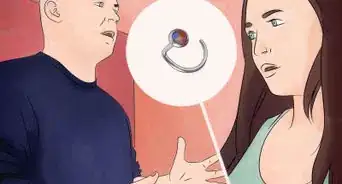
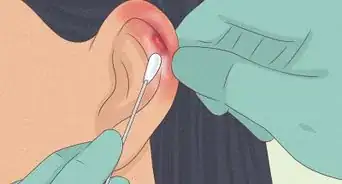
 Treating Your Infected Nose Piercing at Home (and When to See a Doctor)
Treating Your Infected Nose Piercing at Home (and When to See a Doctor)
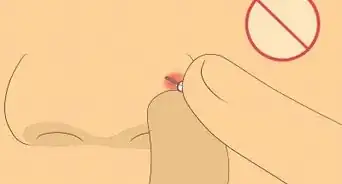 How to Get Rid of a Nose Piercing Bump ASAP
How to Get Rid of a Nose Piercing Bump ASAP

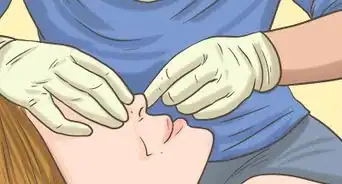


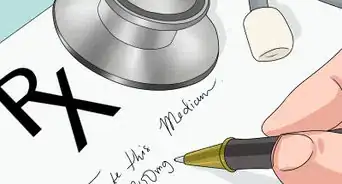

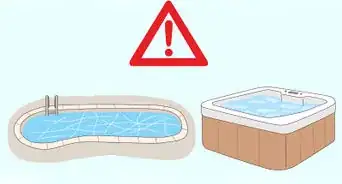

References
- ↑ https://www.cdc.gov/handwashing/when-how-handwashing.html
- ↑ https://authoritytattoo.com/septum-piercing-care/
- ↑ https://www.youtube.com/watch?t=222&v=VWid115ormg&feature=youtu.be&ab_channel=UrbanBodyJewelry
- ↑ https://authoritytattoo.com/septum-piercing-care/
- ↑ https://medicine.uq.edu.au/article/2017/06/health-check-what%E2%80%99s-right-way-blow-your-nose
- ↑ https://www.theguardian.com/lifeandstyle/shortcuts/2018/oct/12/blow-pick-or-swallow-a-definitive-guide-to-clearing-a-blocked-nose
- ↑ https://newsnetwork.mayoclinic.org/discussion/mayo-clinic-minute-combat-allergies-like-a-pro-by-learning-how-to-use-your-nasal-spray-properly/
- ↑ https://www.ncbi.nlm.nih.gov/books/NBK279542/
- ↑ https://www.youtube.com/watch?t=36&v=8mLJx0fpzyA&feature=youtu.be&ab_channel=KatTeDdy
- ↑ https://authoritytattoo.com/types-of-nose-piercings-rings-jewelry/
- ↑ https://safepiercing.org/aftercare/
- ↑ https://www.uofmhealth.org/health-library/hw67090
- ↑ https://uhs.berkeley.edu/health-topics/body-piercings
- ↑ https://www.evolutionpiercing.com/aftercare
- ↑ https://safepiercing.org/aftercare/
- ↑ https://time.com/5178277/is-it-bad-to-pick-your-nose/
- ↑ https://www.unitypoint.org/livewell/article.aspx?id=78a0011a-bc34-4990-af87-f73bebc5ffd5
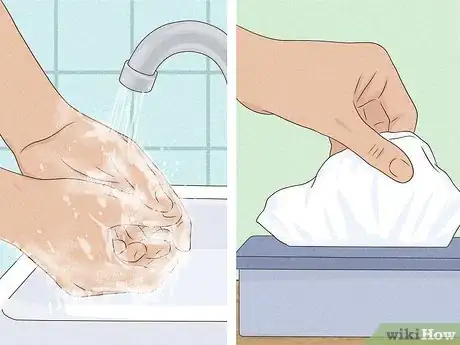

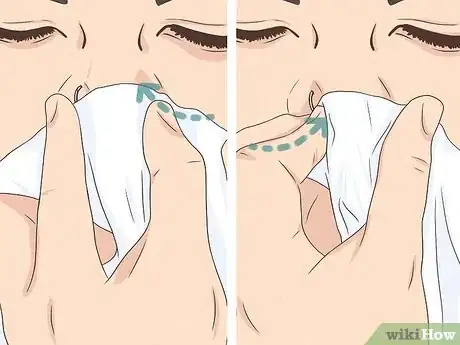

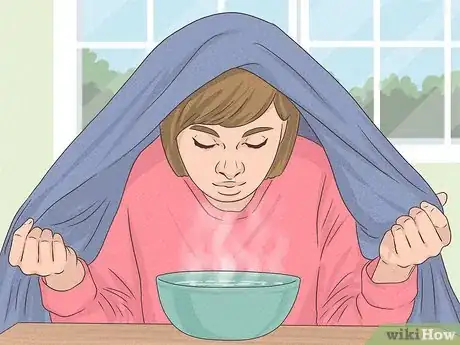
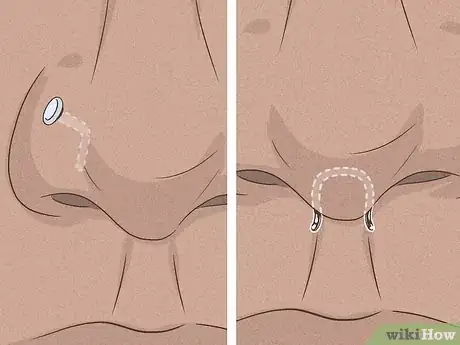

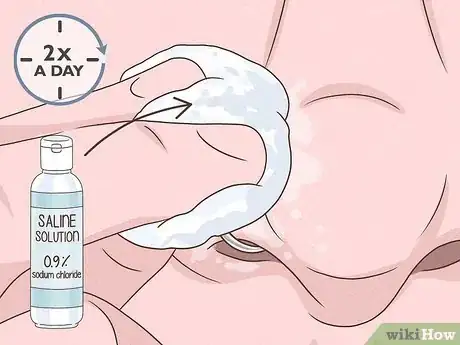
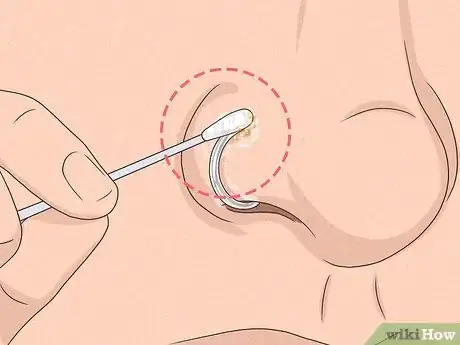
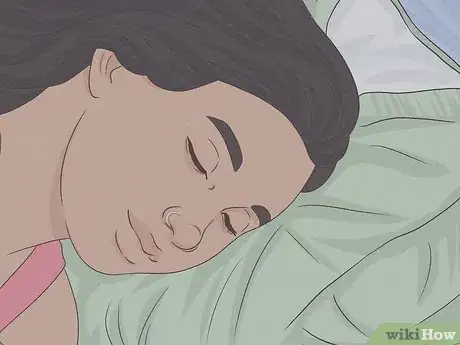









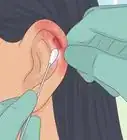





































Medical Disclaimer
The content of this article is not intended to be a substitute for professional medical advice, examination, diagnosis, or treatment. You should always contact your doctor or other qualified healthcare professional before starting, changing, or stopping any kind of health treatment.
Read More...